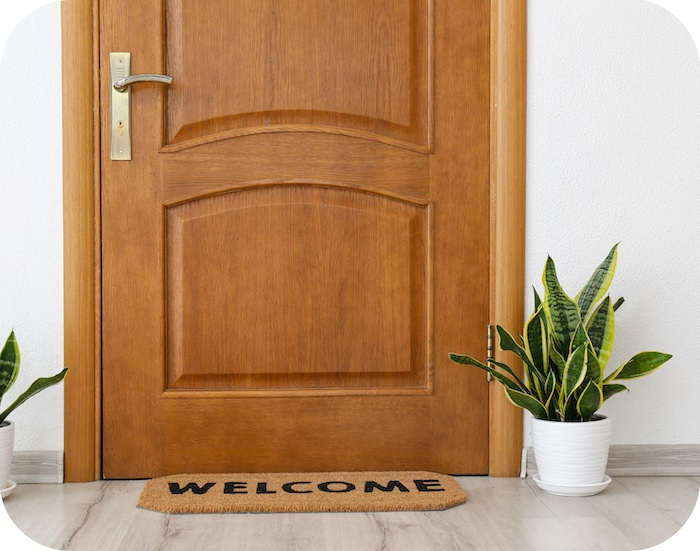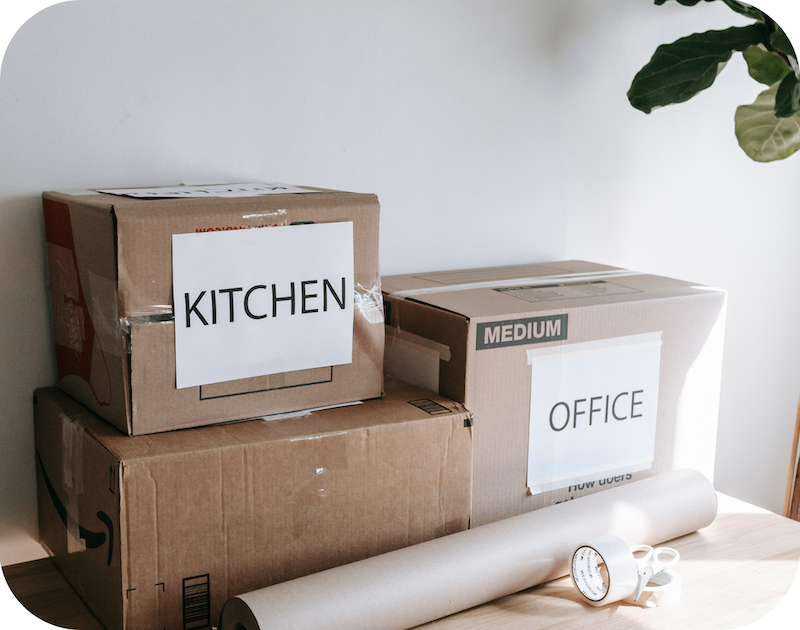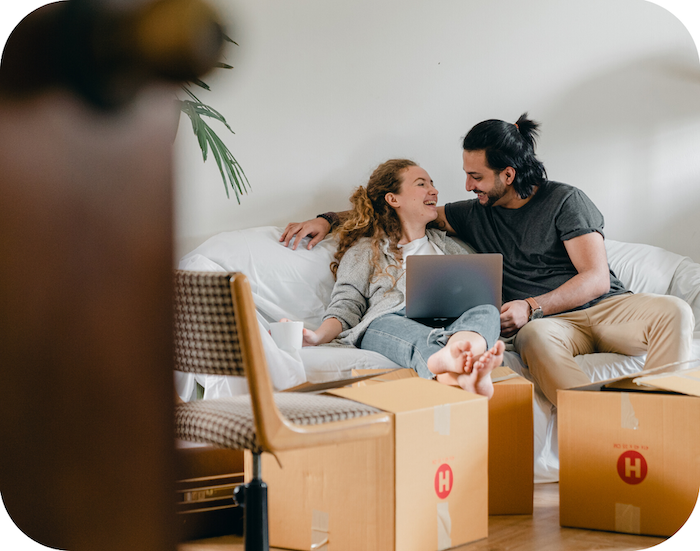Step 1: Get Clear on Moving Costs
To set a budget for yourself, you need to figure out how much it’s going to cost you to move. You’re not going to be able to pinpoint an exact number, but if you think about it enough (and keep reading), you should be able to get a fairly accurate estimate.
Start with all the obvious, big expenses. These include:
-
Moving Companies. If you’re planning on hiring professionals, get quotes from 3–5 companies for a ballpark number to work with. Make sure to include whatever extra service options you plan on using: additional insurance coverage, full-service packing, storage, special crating for couches, pianos, refrigerators, etc.
-
Packing Materials. New boxes are surprisingly expensive. You have plenty of cheaper options available, like renting used boxes or picking them up for free from stores. Don’t forget bubble wrap, packing paper, and anything else you might need.
-
Transportation. If you’re driving to your new home, you need to budget for gas, obviously, but also for tolls and food/accommodation for multi-day drives. If you’re flying, budget for plane tickets, checked-luggage fees, over-weight baggage fees, and transportation to/from the airport.
-
Closing Costs. These can be significant if you’re buying a home. Even when leasing an apartment you typically have to provide the first month’s rent, a broker fee, and a security deposit that can be 1–2 month’s rent.
Next, do your best to think of all the sneaky, hidden expenses that will try to mess with your budget. Things like:
-
DMV fees for a new driver’s license and license plates, or to update your vehicle registration. More information on this here.
-
Vaccinations, veterinarian fees, new registration papers for your pets.
-
Missing work — a day’s missed paycheck is basically subtracting money from your bank account!
-
Food and water for friends/family that help you move.
-
Long-carry fees — if you live in the city and they can’t park right in front of your house, they’ll charge you upwards of $100 for every 75ft away from your door.
-
Elevator fees — Your building may charge upwards of $75 for this.
-
Utility security deposits and installation fees.
The more hidden fees you can think of here, the more accurate your budget is going to be.
Step 2: Set Up Your Budget
Once you’ve figured out how much you’re going to spend on moving, it’s time to find the money for it!
The basics of setting up a budget is getting crystal clear on 2 things: 1) what you’re already spending and 2) what you should be spending. Once you’ve done that, you can go about setting your budget and allocating money for the upcoming move.
There are great apps/websites out there that can help you with this. For a deep dive into setting up a budget, check out Ramit Sethi’s guides on the subject. And for help managing your finances, Mint and YouNeedABudget are both great places to start.
Step 3: Stick to Your Budget
This is where the rubber meets the road. While the above guides and websites will help you immensely in sticking to your budget, here are a few easy, money-saving tips to get you started:
-
No buying things in gas stations (besides gas!).
-
Ditch the cable. Use the internet or sign up for Netflix. Or use your older brother’s account!
-
Head to YouTube and learn some DIY home repairs and hacks.
-
Start using coupons: Groupon, LivingSocial, Entertainment, etc.
If it’s too late to create a budget and you need to move cheaply — check out our 7 Tips for Moving on a Budget!
Thanks for reading! If you liked this post, please recommend or share it with others. 🙂
Want to talk? Connect with accionvegana on Facebook, Twitter, and Instagram!














